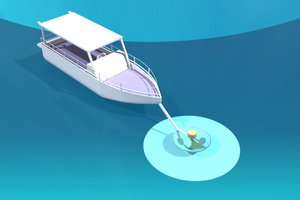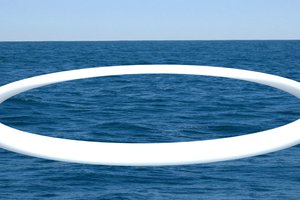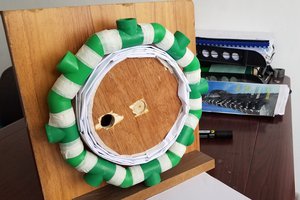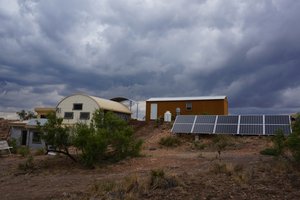Background
Earlier this year, we designed and built a robust, IoT self-watering plant system (Project Eden) that I installed in my home garden. Having a background in water process engineering, I aspired to develop a solution aimed at water conservation that was cheaper to implement than the average irrigation system. The system also gave the user full visibility over the tank water level, temperature, humidity, soil moisture and the ability to control the pump. This project was published as part of a collective engineering-based content platform run by two engineers.
Since delivering the first edition (1st Ed), we have been designing a scaled-up version of the smart watering system into IoT hydroponics. The main components used in the 1st Ed are essentially the same, however, we are evolving into an advanced deep water culture (DWC) hydroponics apparatus. DWC hydroponics is effectively a method of growing plants using an aerated water reservoir, in which the roots of the plant are submerged in a water and nutrient solution.
The advantages of this advanced DWC hydroponics are:
- Accelerated growth due to efficient absorbance of nutrients and oxygen
- Negates the need for a lot of fertilisers (more environmentally friendly)
- Little maintenance required, minimal moving parts and simple assembly
- Live monitoring and control, as well as automation
Using the principles described above, climate-friendly & resilient tomatoes will be grown.
Challenges Addressed
There is no denying that the global climate crisis has a significant impact on water scarcity, with water shortages and droughts being more prevalent in areas of the world due to extreme weather events. Hydroponic gardening is extremely climate friendly in that it requires far less footprint than typical gardening, uses up to 80-90% less water, produces higher yields, does not require soil or many fertilisers, and crops can be grown at any time of the year, as well as any location, reducing carbon emissions from transportation. In terms of climate resiliency, this project aims to address the following challenges.
1. Water Consumption
Water is an extremely vital resource and with time, ways to preserve water and use it more sustainably need to be explored. 23-40% of household water is accounted for from outdoor use, with the highest water usage being associated with lawns, most vegetables and fruit trees. A lot of water is wasted in handheld watering due to
- Water reaching the wrong spot of the plant
- Oversupplying the plant with water
- Watering at the wrong time of day
- Poor management of soil
Of course, there are efficient sprinkler and irrigation systems (which the 1st Ed of this achieved), however, they're only known to use 30 to 70% less water than conventional sprinklers and watering systems. Furthermore, sprinklers cannot be used in windy climates. Drip irrigation systems are also prone to plastic degradation from the sun, which can affect soil and fertilisers, as well as requires precise installation. Irrigation systems also risk water losses through seepage and percolation in surface irrigation and evaporation in sprinkler irrigation (dependent on discharge, temperature and humidity).
As such, the IoT hydroponics project will address the issue of poor water conservation as there are extremely minimal water losses in DWC hydroponics.
2. Fertiliser Use and Soil
It's known that fertilisers are the main nutrient (nitrogen, phosphorus and potassium) source for plants. In conventional farming, nitrates are easily leached from the soil and phosphorus can also be lost from the soil by erosion and high rainfall. Leaching through soil leads to health hazards (especially if groundwater is supplying utilities) and contributes to an acidic environment. Unfortunately, acidic soils may cause nutrient uptake to become unavailable, leading to nutrient deficiencies in plants and therefore causing sickness and even death.
Eutrophication and...
Read more » Uncle Toby and Aquaman
Uncle Toby and Aquaman
 Anteneh Gashaw
Anteneh Gashaw


 tlankford01
tlankford01